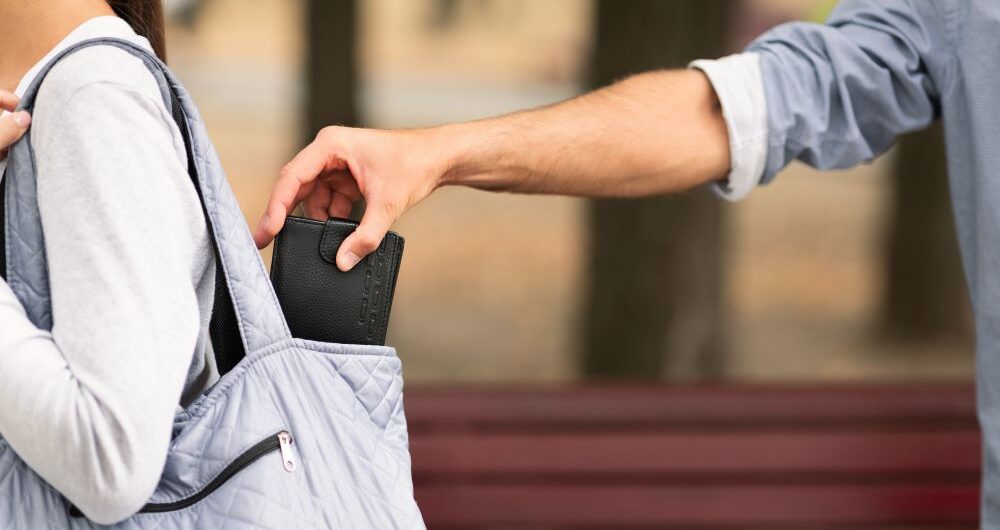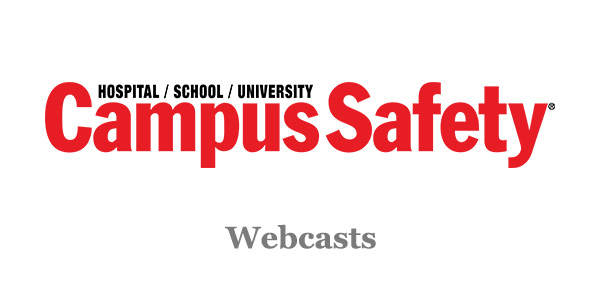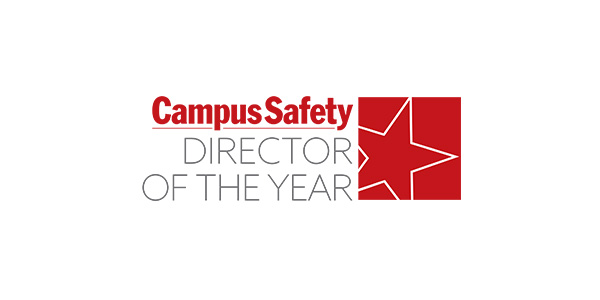Personal safety is something we often take for granted in our daily lives. Whether we’re walking to work, driving to the store, or simply enjoying time outdoors, it’s easy to overlook potential risks until it’s too late. That’s why staying vigilant and prepared is essential. The following comprehensive list of safety tips will help you face everyday situations with confidence and caution. These strategies aren’t about living in fear but rather about empowering yourself with the knowledge and tools to stay safe.

Article author John Weinstein will be presenting A “Overcoming Obstacles to Innovation” at this summer’s Campus Safety Conference being held in Austin, Texas, July 21-23. For more information and to register, CLICK HERE.
From maintaining situational awareness to developing practical habits like varying your routine or keeping emergency tools at hand, these actionable tips are designed to help protect you and your loved ones. This article also discusses safety strategies your place of employment, community organization or house of worship should consider.
By adopting these measures, you enhance your ability to recognize, avoid, and respond to potential threats effectively. Remember, safety starts with preparation, and the steps you take today can make all the difference in the moments that matter most.
Want to Improve Your Personal Safety? Adopt These 2 Key Habits Now
Although this article is loaded with numerous, specific suggestions that will improve your personal safety and security, if you learn nothing else from the following suggestions, be sure to adopt these two important habits:
1. Don’t look like a victim.
Predators seek out easy “marks” rather than people who look like they might resist. Walk in a confident manner: head up, shoulders back, and do not avoid eye contact.
2. Be aware of your surroundings.
Look for developments out of the ordinary, such as someone following you for some distance, dressed inappropriately for the weather (i.e., that raincoat could be hiding a rifle on a sunny day), or mumbling (possibly praying) to himself. Also, look at people’s waists; this is where handguns are hidden. Finally, look behind yourself frequently. If you see someone following you, make eye contact.
Consider Adopting These Other Important Personal Safety Strategies
Personnel
- Get training in active shooter response, first aid, tourniquet application, basic self-defense, and conflict de-escalation.
- Avoid distinctive and ostentatious attire. Predators will home in on people wearing pricy clothes, an expensive watch, etc. Do not wear clothing brands or attire (e.g., ball caps) that identify you as an American if overseas.
- Watch people’s hands. Their eyes may be the pathway to their soul but it is their hands that will hurt you. On a related note, do not let people invade your personal space, which is about 3-5 feet. If they do, don’t be reluctant to ask them to back off; that their proximity makes you uncomfortable.
- Train your family, workplace and community. Get local police or specialists to present information about active shooters, tourniquet application, first aid, basic self-defense, etc. Conduct occasional exercises covering responses such as evacuation, relocation into a safe room, etc.
Related Article: Want Someone to Calm Down? Don’t Say These 3 Things
Procedures and Plans
- Don’t be predictable. Vary your route to work and take different routes.
- What if? Everywhere you go, ask yourself what if X happens? What would I do? If you do this on a regular basis, you can rely on muscle memory. Trying to figure out what to do is no time to develop a plan when you’re under attack/
- Watch out for distractions. Predators often work in teams. One will ask directions or the time while the other reaches into your car and steals your computer, bag, etc. Gas stations are notorious for this.
- If you can, run away and scream “fire!”.
- Go on the offensive. If someone is about to put hands on you, close the distance and strike (fingers in eyes, throat punch). It will surprise the attacker. Also, you may not be able to outrun your attacker, especially if you have to turn around.
- Fall in a heap. If someone is trying to kidnap you, feign fainting and collapse in a heap. You will be dead weight and be more difficult to move.
- When possible, travel in pairs or groups of people. While there is safety in numbers, you should still exercise situation awareness and look behind you.
- Duress code. Pick a word you don’t usually use to indicate you are under duress and discuss with your family members. For instance, if you refer to your son a “butch”, your daughter as “princess” or your wife as “honey”, it could denote something is wrong. (If you usually call your wife “honey,” try “sweetie.”)
- Windows up/doors locked. When driving, do not facilitate sudden entry into your vehicle.
- Avoid the left lane. When driving, stay in the right lane. If you must, you can drive onto the sidewalk to escape. It’s easier to be boxed in if you are in the left or center lane.
- Pay attention to calendar dates. In the US, certain dates (e.g., April 2—Columbine; April 19- Oklahoma City bombing, September 11, October 7) may move or “inspire” predator to undertake similar actions.
- Copycats. Be especially alert after certain events such as hostages on active shooters. Copycats are a greater threat during the following two weeks.
- Engage strangers. When strangers come to church, have someone meet them.
- Inspect/correct security. Ask local police to inspect security at your home and/or church.
- Gather intelligence. Meet periodically with local police to learn of local threats/problems.
Facilities
- Monitor the perimeter. Have greeters or security team, pay attention to what happens in the parking lot or outside. This is where threats develop and it provides time for you to take action (call police, evacuate to a safe room, etc.)
- Maintain your property. When away from the house, ensure the yard is cut, shrubs are not overgrown, garbage cans are not left out, and mail/packages don’t pile up. Disarray tells burglars nobody is home. Overgrown shrubs provide cover while illegal entry is being attempted.
- Prepare a safe room in your house or place of employment you may evacuate to during an incident.
- Know the location of cover. Know and teach the difference between cover, which will stop a bullet, and concealment which only hides one from view.
- Increase police presence. Offer a remote office space to local responders. It’s a good thing for police to be present at your site. (This is why 7-11 offers free coffee to police officers.)
Equipment
- Protect garage door openers. Do not leave your garage door opener in your car. If it’s stolen, predators will have access to your house if you don’t lock the interior door. Even if you do, you give a predator cover to lurk in your garage and steal your stuff.
- Carry useful tools. Carry pepper spray, a small pocket knife, and a handcuff key. The knife is not intended for combat but rather for escape.
- Have a throw-down wallet. Keep your passport, license, a credit card and most of your cash in your pocket. Carry a wallet with a little cash in it and some miscellaneous papers that you can give to someone holding you up.
- Ping. Turn on the location function in your cell phone.
- Your vehicle is a weapon. Use it if you must in a life-or-death situation.
- Install cameras. Install a camera system outside your home or workplace.
- Get a dog. They are great early warning systems. If you can’t get a dog, scatter some dog toys in your yard and post a sign that says to beware of the dog.
Related Article: How to Improve Parking Garage Security
Communications
- Limit intelligence about yourself that can be used by predators. Do not post information about yourself on social media (i.e., who you are, your plans) and avoid bumper stickers that get others’ attention. For instance, an NRA bumper sticker suggests there may be guns in the vehicle.
- Put local police on speed dial.
- Yell “Fire!” Do not call for “Help!”
Personal safety begins with preparation and awareness. By adopting these practical strategies, you can significantly reduce risks, empower yourself, and face daily life with greater confidence. Whether it’s maintaining situational awareness, varying routines, or equipping yourself with tools and knowledge, these proactive steps play a vital role in protecting you, your loved ones and your community.
Remember, safety is not about living in fear but about making conscious choices to stay vigilant and prepared. Take the initiative to integrate these habits into your routine and encourage those around you to do the same because a safer community starts with individuals who are ready to act.
John M. Weinstein PhD is a retired lieutenant for Northern Virginia Community College and now is a consultant with Dusseau Solutions.
Note: The views expressed by guest bloggers and contributors are those of the authors and do not necessarily represent the views of, and should not be attributed to, Campus Safety.







